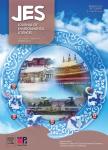Identification of causative compounds and microorganisms for musty odor occurrence in the Huangpu River,China
Identification of causative compounds and microorganisms for musty odor occurrence in the Huangpu River,China作者机构:Research Center for Eco-Environmental SciencesChinese Academy of Sciences Shanghai Municipal Control and Monitor Centre of Water Supply The Administrative Center for China's Agenda 21Ministry of Science and Technology
出 版 物:《Journal of Environmental Sciences》 (环境科学学报(英文版))
年 卷 期:2013年第25卷第3期
页 面:460-465页
核心收录:
学科分类:0830[工学-环境科学与工程(可授工学、理学、农学学位)] 082803[工学-农业生物环境与能源工程] 08[工学] 0828[工学-农业工程] 0804[工学-仪器科学与技术]
基 金:supported by the National Natural Science Foundation of China(No.50938007) the National Special Funding Project for Water Pollution Control and Management of China(No.2008ZX07421004)
主 题:river water source 2 methylisoborneol musty odor Phormidium watershed
摘 要:There are regular problems of musty odor in the Huangpu River,a major source of drinking water for Shanghai,*** this study,the musty odor and its main causative compounds in the Huangpu River source water were confirmed through a yearly investigation using flavor profile analysis combined with HSPME-GC-MS *** investigation showed that 2-methylisoborneol (2-MIB) with a concentration level between 28.6 and 71.0 ng/L was responsible for the musty odor in summer from July to *** observation confirmed with the cloning results showed that Phormidium spp.,which accounted for 80%-95% of the algal cell density,was the microorganisms responsible for the production of 2-MIB and the estimated 2-MIB yield was 0.022 pg/*** from a wide-area sampling campaign in the Huangpu River watershed showed that,other than the large tributaries receiving water from Tai Lake,several small creeks close to the intake may have contributed most of the 2-MIB and the Phormidium *** the Huangpu River source *** study provides methodology for the investigation of odor causing compounds and microorganisms in river-type source water,and the result will be useful for water quality control in both source water and drinking water.



